|
[The increasing pressure on the Bush administration at home in the wake of the Cindy Sheehan catalyst and an impeding mass mobilization against the war on September 24 th lends more urgency to show a result in the Iraq war – the latest one being a draft Constitution. But not only is this issue so arcane to the average American ear fails to provide any resonant symbolism, the real result of the forced pace of the draft is exacerbating an extremely adverse political situation for the US in Iraq and the region.
The primary forces remaining in the Iraqi “government” are semi-puppets. On the one hand, they are dependent on American military power for the time being to maintain the current balance of forces in their favor. On the other hand, they clearly have an agenda that is designed to consolidate that long-term power through a pact of some sort with Iran.
This has created a polarization between current direct participants in the Iraqi government and the minority – strategically located and well-armed – Sunnis/nationalists in the north. That is not a cultural polarization but a political one that further entrenches the Faustian alliance between the government and the US occupiers each day, though there is no inhering reason among the general populations – who have for years seen inter-ethnic and inter-denominational marriage, etc. – for any pressure to partition the country.
The so-called Iraqi government does not in fact exercise real governance over any but a fraction of Iraq, and the “city-state” phenomenon throughout the country is setting the stage for a universally unacceptable Balkanization of Iraq, at the same time that it is developing the probable (and yet largely unknown) future local leadership of Iraq.
At some point in the future, most of these actors will have to deal with one another politically.
The Shia interim government and the US have maneuvered themselves into the same corner with antagonistic goals if and when they ever find their way out. The Sunnis and nationalists of the north have no stake in partition, and with the withdrawal of occupying forces would b e freer to negotiate a political settlement with the south. This leaves one hugely influential local leader in the most flexible position in Iraq right now – Muqtada al Sadr.
He is the man to watch in Iraq for now.
Meanwhile, the greatest impediment to a political solution to post-invasion Iraq is not some cauldron of inter-ethnic rivalry. It is the politico-military distortion produced by the American occupation. –SG]
THE DANGER OF IRAQI PARTITION
An update on the progress of the Energy War
By
Stan Goff
© Copyright 2005, From The Wilderness Publications, www.fromthewilderness.com. All Rights Reserved. This story may NOT be posted on any Internet web site without express written permission. Contact admin@copvcia.com. May be circulated, distributed or transmitted for non-profit purposes only.
September 7, 2005 0900 PST (FTW) – There’s weather; and then there are storms.
It was a weather scientist, Edward Lorenz, who unintentionally created a revolution in science when he was trying to model weather on a primitive computer in 1961.
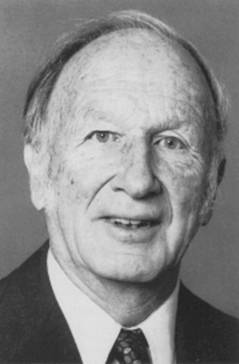
Lorenz had been puttering around with his toy, trying out a set of 12 equations to see what their value might be for predicting weather. He was in a rush one day, so instead of running the whole sequence, he typed in the values part-way through the sequence and let it run for an hour. (I told you, these were very slow computers by today’s standards.) But something happened.
When he checked his figures after that hour, he found not some minor variations, but some sho’ ‘nuff, holy-shit! variations. In his investigation of what had “gone wrong,” he realized that he had set the computer to calculate to six places beyond a decimal point, but to print out only to three places. So when he has started the mathematical process with unintentional differences that are generally considered to be statistically insignificant, he got wildly differing results – not differences of quantity, but of quality.
This was one of those aha! moments for Lorenz, whereupon he decided that predicting the weather would always be impossible because in any complex system, extremely tiny variations at one point in time develop into massive variations in possibility… which translates into “randomness” even in deterministic systems, ergo, unpredictability.
What Lorenz had discovered was that Einstein’s dismissal of quantum physics “randomness” as “God playing dice with the universe” was wrong, but only partly wrong. Lorenz discovered that “God plays dice with the universe, but the dice are loaded.” Lorenz didn’t see his experiments as momentous beyond weather prediction, and he published a meteorological paper on his discovery – which then lay idle for several years.
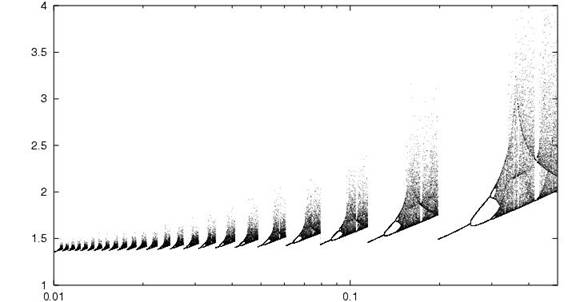
Then a biologist named Robert May ran across Lorenz’s publication and decided to conduct similar experiments in biology – another science involving very complex systems. May was looking at population growth rates, and he noted that when he accelerated the rates of growth, even using the same figures, his progressions would hit points where two distinct deterministic possibilities occurred – one identical cause with two possible effects. He called these points of dual possibility “bifurcations.” He also discovered that the faster he accelerated his progressions, each “branch” of the bifurcations would itself bifurcate, faster and faster, until a point of absolute unpredictability occurred – chaos. After the “chaotic” interlude, a new period of relative stability would return, but on a wholly different mathematical basis, and then the “agitation” would set in again.
The way I visualize this process is by thinking about a cigarette burning in an ashtray. There is a fairly steady up-streaming column of blue-gray smoke (called lamina flow), but at some point on that column you see this smoke-rope begin to sway then very suddenly ripple all over the place, then reassume a stable but different pattern (vortex flow) above the ripple. We have all seen this.
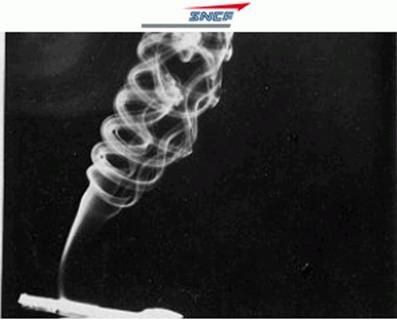

Bifurcations can be social and political, too.
The bifurcations are reproducing like rabbits right now in Iraq.
The most interesting one, and my point of departure for this update, is the series of armed confrontations that occurred in Baghdad this August 23-24 between the former Badr Brigades and the Mahdi militias of Muqtada la Sadr. It is interesting because it represents the boil-over of a situation in Iraq that does not conform to the Bush administration fable of ethno-religious division as the primary political fault line. The former Badr Brgiades, now a militia serving as the extralegal armed wing of the Supreme Council for the Islamic Revolution in Iraq (SCIRI), and Sadr’s Mahdi militia are both Arab and both Shia.
This fact should lead us to examine all the assumptions revolving around the official US narrative on Iraq, particularly the one that supports continued liberal support for the occupation – and that is the notion that the abrupt withdrawal of US troops will result in an Iraqi bloodbath.
I, and others, have said for some time now that Muqtada al Sadr is not merely a complicating peculiarity in Iraq, but that he may end up being the canniest of all the current well-known Iraqi leaders – politically and militarily.

SADR AND SISTANI BIFURCATION
In describing a situation that has acquired higher and higher levels of complexity, the entry point for such an analysis is arbitrary. I choose the Sadr phenomenon because it is in the news, and because it throws the deep inaccuracy of public discourse on the whole war into bold relief.
On January 12, this year, Michael Schwartz wrote a very comprehensive overview of this phenomenon for Asia Times in his article, “The taming of Sadr City.” His essay was valuable not only for gaining a more detailed understanding of the social forces behind the Sadrist movement. It also lays out a framework for looking at the whole of Iraq, which Schwartz describes as a former country that has now been practically divided into independently operating martial city-states as a direct result of the Anglo-American invasion and occupation.
In attempting to exert control over the national lines of communication and transportation, the occupying forces created these politico-military pockets, and with the failure of US forces to establish any effective post-invasion administrative apparatus, Iraqis self-organized locally in response to the multiple crises created by the invasion and to ensure the daily necessities of housing, food, commerce, education, and security.
This self-organization was met in some cases, such as Fallujah in 2003, with violent suppression by the Americans even though the Americans had no viable alternatives on hand, nor apparently even the inclination to provide them. Any organization of governance instantly takes on a political character in any case, but the specific actions of the Americans in confronting the Iraqis with a no-win situation – that is, no provision of basic services and governance combined with violent suppression of any genuinely organic remedies – forced these emerging Iraqi structures to take on a political character that was decidedly military and largely opposed to the American occupation.
The massive 3-million-soul Shia slum in Baghdad, called Sadr City, was one such pocket. This “neighborhood” alone represents close to 20% of Iraq’s Shia population; and Iraq’s Shia population represents around 60% of Iraq’s total population. This numerical breakdown is the first small step in deconstructing the narrative of regionally-fixed ethno-religious homogeneity. This conception is inscribed between the lines of virtually every Bush administration and big-media account of the war.
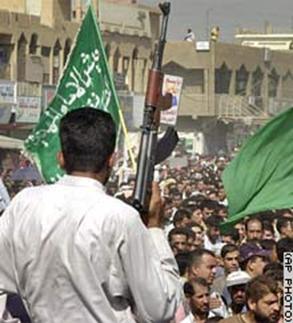
Once we begin to understand the fundamental failure of this premise to either describe or predict the social, political, and military dynamics in Iraq, we are immediately confronted with two questions: (1) How, in fact, can those dynamics be more accurately described? And (2) Why does the administration insist on creating this false description?
In his analysis of this “city-state” situation emerging in Iraq, Schwartz writes:
The Sadrists have developed an effective political-military strategy aimed at converting Sadr City into a "liberated area", in the classic guerrilla warfare model.
- Their main military strategy is to expel the US from their domain; only when they are under attack themselves do they venture outside Sadr City to attack US bases or supply routes.
- The al-Sadr organization is attempting to construct a coherent "dual" government that replaces the central government and which administers the usual set of public services - from traffic control to apprehending street criminals - within limits set by their inability to coordinate with a national government. This proto-government has been particularly assiduous in addressing the number one problem of public order, street crime, and has actually cooperated with the local police in this campaign.
- Mehdi soldiers - the guerrilla forces led by the Sadrists - though prone to thuggery, are largely under the control of this dual government, which is led by civilians - tribal leaders and Muslim clerics. The Mehdi soldiers act as the police force within the community.
- The Sadrists have been surprisingly successful in co-opting the Iraqi police, by rewarding them for working on community issues and fighting them when they participate in efforts to suppress the rebel political-military structure. American military complaints about the unreliability of their Iraqi trainees is actually a reflection of successfully applied guerrilla policy.
- The Sadrists have begun to enforce strict Islamist fundamentalism by suppressing such "moral crimes" as liquor sales and prostitution. The have utilized an ugly brand of vigilantism (firebombing, assaults and even homicide) to remove moral criminals from the community.
- The Sadrists, and parallel groups in other cities (notably Fallujah), have publicly denounced the spectacular bombings perpetrated by various terrorists groups, complaining about their negative impact on the lives and livelihoods of Iraqi civilians and calling for an active alliance with the Iraqi police in suppressing foreign jihadis and domestic terrorists.
- The organization in Sadr City is an echo of similar developments in Sunni cities (with Fallujah as the center), and it may foreshadow similar developments in the all-important Shi'ite south. The American attacks on various Iraqi cities, including the brutal battle of Fallujah, was an attempt to reverse this trend toward self-governed cities into which American forces rarely intrude.
- The existence of these dual governments in many cities rebuts American claims that US withdrawal would result in chaos. Ironically, just the reverse is true; US success in defeating the guerrillas would result in chaos, whereas a guerrilla victory would bring greater stability (and perhaps too strict an order) to the Iraqi cities.
Muqtada al Sadr did not provoke the battle with the Americans in March and April 2004 (in which the well-known antiwar mother, Cindy Sheehan lost her 24-year-old son, Casey). In fact, quite to the contrary, the Coalition Provisional Authority, still under Viceroy Paul Bremer, provoked it – seemingly gratuitously. The CPA arbitrarily shut down the Sadrist newspaper, then killed unarmed demonstrators who protested the closing.
Of course, it wasn’t gratuitous at all, but a calculated political move encouraged by the senior Iraqi puppet at the time, Iyad Allawi. Not only did Allawi and Bremer provoke this fight intentionally in order to destroy the most influential Baghdad cleric calling for an end to the occupation, they set up the fight to happen in Najaf instead of Baghdad, where the Mahdi militia of al Sadr enjoyed direct popular support.
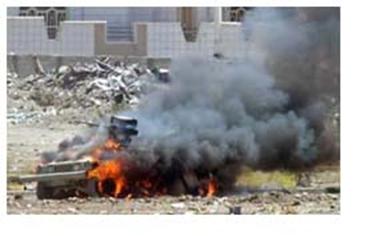
This was the only political victory accruing to the Americans during the whole sorry episode. They attacked the Mahdi in Najaf near the Shrine of Imam Ali to draw them into a terrible urban battle of attrition among a civilian populace that had no direct connection to the Mahdi – hence the lack of popular support among Najaf residents near the epicenter of the fighting for the Mahdi. But this was a Phyrric victory for the Americans, because they lost more of their dwindling political capital in the process by their utter disregard for civilian casualties, and because outside Najaf al Sadr – who was publicly marked by Centcom for arrest or death – became an overnight legend for his bold resistance to the unpopular Americans.
The American authorities would eventually spin the story that the local Marine commander in Najaf initiated the battle there with no clearance from on high. – a claim that borders on the preposterous.
This was at precisely the same time that the US decided upon a scorched earth assault on Fallujah after the killing of four American mercenaries there, codenamed Operation Vigilant Resolve.
There were two major military miscalculations that then occurred simultaneously: underestimation of the resistance in Najaf, and underestimation of the resistance in Fallujah. While the Mahdi militia took horrendous casualties against Marine firepower, they managed to bog the Marines down in the cemetery around the Shrine of Imam Ali for eight days, and with each day that passed, that cemetery became a more treacherous political minefield. In Fallujah, the resistance put up a stubborn house-to-house fight that called on the Marines to expend phenomenal quantities of materiel that required a steady stream of overland resupply. Iraqi nationalist forces outside Fallujah began a relentless series of attacks on the Marine supply convoys, which would eventually halt the Marine offensive in a humiliating stalemate.
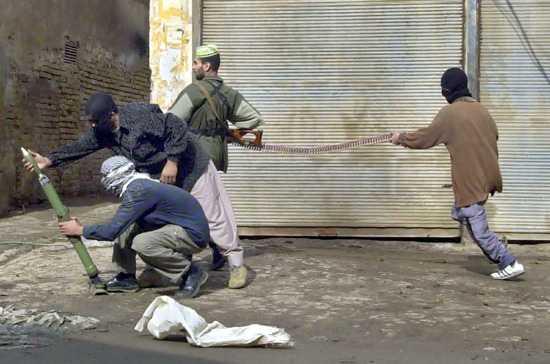
On the sidelines of this American tactical and political debacle sat Grand Ayatollah Ali Sistani, the top ranking Shia cleric in Iraq and a partisan of Iran’s clerical state leadership. When Sadr’s challenge to Sisiatni’s popularity began in mid-year 2003 with Sadr’s open opposition to the Anglo-American occupation (which Sistani was trying to finesse), Sistani opened up a dialogue with Abdul Aziz al Hakim, the leader of the Shia Iraqi political formation, the Supreme Council of Islamic Revolution in Iraq (SCIRI), which also included an Iranian-trained militia called the Badr Brigade that had waged an unsuccessful rebellion against Saddam Hussein after the Bush I invasion in 1991. Hakim himself had lived in Iran for two decades prior to the Anglo-American invasion of 2003.
The SCIRI gained its dominant position in Iraqi post-invasion Shia politics at the expense of the Da’awa Party – another Islamic party that has a much smaller militia, that is not as committed to Iranian-style clerical control over governance, and that now has its real power base in the “city-state” of Nasiriya.
The Americans wanted to marginalize Sistani with support for the “secular” thug, Iyad Allawi. The CPA wanted no part of an Iraqi government that tilted toward their next fantasy target for regime change – Iran. SCIRI has the political organization (and military muscle with former Badr Brigadists) to completely dominate any pan-Iraq government formed through an election, if Sistani would lend his immense clerical prestige to mobile the general Southern Shia population, and Sistani had decided upon a political alliance with SCIRI for just that purpose. But the Americans stubbornly resisted an election, not having prepared the way for an outcome they could manage. Bremer had proposed a pseudo-election of caucuses for mid-2004, which Sistani and most other Shia leaders rejected, demanding one-person, one-vote elections.
Sistani was also watching with consternation the growing popularity of Muqtada al Sadr, whose political influence and heterodox political line made Sistani very nervous. Sistani’s base was not only regionally differentiated from Sadr’s. It was differentiated by class. The sophistication and power of Sistani and the SCIRI was based in large part on the control of the organs of civil society by a well-organized petit-bourgeois Shia layer, and the clerical bureaucracy, the class interests of which Sistani and the SCIRI are still obliged to safeguard. Sadr’s more hands-on, geographically concentrated, and agile social base was not among bureaucrats and professionals, but among the most marginalized working class in Iraq… and in the capital, Baghdad.
The emerging tactical defeat of the Americans in April 2004 presented Sistani with a golden if short-lived opportunity. Sistani wanted elections, and he wanted elections that would assure the Shias of a dominant role in Iraqi politics. He also wanted genuine sovereignty to accompany that result, including the right to call for the departure of American forces. He was not aiming to become the next puppet of the US. Until now, the Americans had resisted every overture for elections that they did not absolutely control.
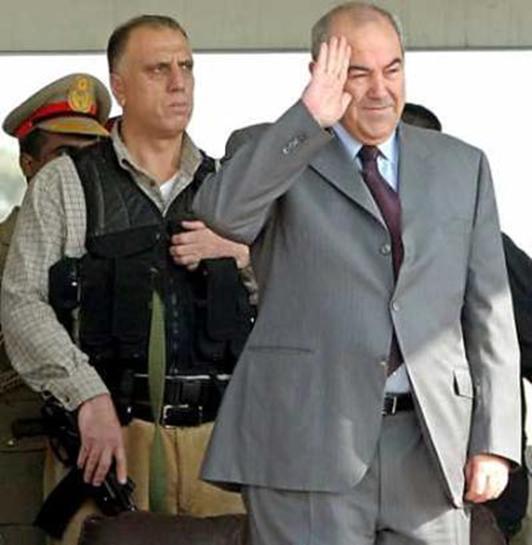
But now the Americans were faced with the dual tactical crises of Najaf and Fallujah, and the specter of a generalized Shia rebellion in the South that would render the occupation untenable within months.

Sistani allowed the Americans to use him as the counterpoint to Sadr – the good Shia in contrast to the “radical, anti-American, firebrand (choose your impressionist adjective)” Shia. Sistani needed the Americans to displace Allawi’s power, and the Americans needed Sistani to broker a truce.
Sadr – who was still under a “dead or alive” arrest threat from the Americans – was looking for a seat at the political table and a free hand to develop his own geographic and social base.
The rest was history.
Sistani and the SCIRI united with the Da’awa in a united front, and got their election scheduled for January. The Americans were extricated from their two-front tactical and political quagmire. Muqtada al Sadr not only did not face arrest or assassination – yet another humiliation for the US; he went on to establish his own “city-state” in Sadr City that is now effectively a no-go zone for US forces.
SCIRI-DA’AWA AND IRAN BIFURCATION
The original plan for the US armed forces, based on the advice of Ahmed Chalabi, an ex-pat and felonious advisor to the administration before the invasion, was to quickly consolidate US power in a sea of Iraqi benevolence, then go on to effect a regime change in neighboring Iran.
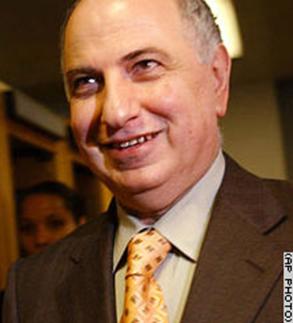
There is probably no more vivid an example of how badly the Bush administration has miscalculated from the very beginning of this military adventure than the fact-on-the-ground today that the occupation hangs by a thin thread of tolerance from a pro-Iranian formation; and that Iran now silently must support the US occupation, because this dependence on the pro-Iranian semi-puppet Iraqi “government” effectively prevents the Americans from attacking Iran. Any attack on Iran right now would almost certainly result in an instant and general anti-American uprising in Iraq that would precipitate a crushing American defeat.
In the run-up to the elections of January 2005, as reported in depth by Seymour Hersh (“Get out the vote – Did Washington try to manipulate Iraq’s election?”, New Yorker, July 25, 2005), the United States was working frantically behind the scenes to ensure counterweights in the post election government large enough to prevent the United Iraqi Alliance (UIA, dominated by SCIRI and Da’awa) from gaining a decisive two-thirds majority in the government.

There were three counterweights available: the Kurds, the Sunni nationalists (Ba’athists), and the Allawi faction. Of these three, the worst was Allawi – according to even rock-ribbed conservative imperialists like Richard Armitage, Les Campbell of the National Democratic Institute (the Democrat component of the infamous National Endowment for Democracy, whose mission is to engineer electoral outcomes favorable to the US), and the ultra-conservative Hoover Institute fellow, Larry Diamond, then working as a senior advisor to Bremer’s CPA.
The White House, however, rejected the dire warnings from all these quarters that support for Allawi would undermine the credibility of the entire process among Iraqis and could blow back on the administration as yet another scandal if the story ever got out that millions were being funneled into Allawi’s “campaign” (which it was rightly feared involved massive vote-buying). Instead, the White House was listening yet again to those whose message conformed to the preconceptions of the Cheney clique, and in this case that messenger was Thomas Warrick, a senior adviser on Iraq for the State Department’s Bureau of Near Eastern Affairs, who also had the ear of Condoleezza Rice.
Hersh’s New Yorker article said:
The focus on Allawi, Campbell said, blinded the White House to some of the realities on the ground. “The Administration was backing the wrong parties in Iraq,” he said. “We told them, ‘The parties you like are going to get creamed.’ They didn’t believe it.”
“What Tom Warrick was trying to do was not stupid,” a senior United Nations official who was directly involved in planning for the Iraqi election told me. “He was desperate, because Bremer and the White House had empowered the Iranians. Warrick was trying to see what could be salvaged.” He added that the answer, as far as the United States was concerned, was Allawi, who, despite his dubious past, was “the nearest thing to an Iraqi with whom the White House could salvage the nation.”
It was this sense among senior conservatives in these various agencies about the Bush administration’s continuing recklessness – not any disagreement with their objectives – that likely led to multiple contacts with Hersh for the express purpose of leaking.
At any rate, consistent with the executive go-it-alone impunity of the Bush White House, they conducted another end run. They still had not learned the lesson of their own experience – the one about which other conservatives like Scowcroft and Powell repeatedly warned them: The ability to change outcomes is not the same as the ability to control outcomes.
When the White House went to the Senate and House intelligence committees for approval of a secret finding authorizing a covert operation to support Allawi, they were rejected. Shortly after that, the White House simply ordered the Pentagon – with assistance from former CIA personnel – to go forward with an “off the books” covert operation to support Allawi.
The methods and the scope of the covert effort have been hard to discern. The current and former military and intelligence officials who spoke to me about the election operation were unable, or unwilling, to give precise details about who did what and where on Election Day. These sources said they heard reports of voter intimidation, ballot stuffing, bribery, and the falsification of returns, but the circumstances, and the extent of direct American involvement, could not be confirmed.
And, as Larry Diamond noted, there was also a strong possibility that Iraqis themselves would attempt voter fraud, with or without assistance from the U.S. According to the government consultant with close ties to Pentagon civilians, the C.P.A. accepted the reality of voter fraud on the part of the Kurds, whom the Americans viewed as “the only blocking group against the Shiites’ running wild.” He said, “People thought that by looking the other way as Kurds voted — man and wife, two times — you’d provide the Kurds with an incentive to remain in a federation.” ( Kurdistan had gained partial autonomy before Saddam Hussein’s overthrow, and many Kurds were agitating for secession.)
The high-ranking United Nations official told me, “The American Embassy’s aim was to make sure that Allawi remained as Prime Minister, and they tried to do it through manipulation of the system.” But he also said that there was cheating on the other side. “The Shiites rigged the election in the south as much as ballots were rigged for Allawi.” He added, “You are right that it was rigged, but you did not rig it well enough.”
In contrast to all polls within days of the election, Allawi’s faction gained 14% of the vote compared to his 2-4% reflected in polling, the Kurds won 26%, and the UIA tallied a mere 48% against a much higher polling expectations.
On Election Day, voters had been handed ballots for the national assembly and for the provincial councils. Allawi’s slate ran provincial lists in only eight provinces and received a total of 177,678 provincial votes in those areas. In the same provinces, Allawi’s national list received a total of 452,629 votes — almost three times the number of provincial votes.
Most election experts I spoke to found the deviation surprising and difficult to explain.
Indeed. Democracy is grand.
Returning to my point about the difference between changing outcomes and controlling outcomes, the election results immediately threw the quasi-elected government into a serial crisis, first with regard to cabinet appointments, and more recently with regard to the draft Constitution – both being rush jobs demanded by the Bush administration as public relations milestones to prop up flagging support for the war back in the US.
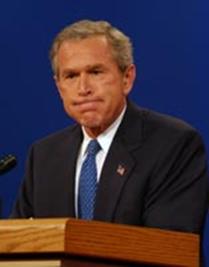
Wrangling over the cabinet was acrimonious, playing out against a background of escalating armed resistance that increasingly targeted Iraqis associated with the new “puppet” regime. It took three months to cobble together a cabinet that had the combined ability to reassure the Americans and provide a modicum of symbolic cover to various constituencies in Iraq.
In the end, the presidency went to Jalal Talibani, a Kurd, and the Prime Minister position – where the real executive power resides – to Ibrahim al Jafaari of the Da’awa Party. Significantly, the Interior Ministry – with control of future militias and police – went to Bayan Jubur of SCIRI, which accounts for the increased employment of former Badr Brigade militia against potential rivals of the SCIRI, especially Sunnis and Ba’athists.
Within the “government,” then, the Da’awa now has the most influence over future administrative structures, the SCIRI has established its dominance among future armed forces, and the Kurds are positioned to play both ends against the middle – while holding on to the most powerful actually-existing militia in the country – the 80-100,000-strong Peshmerga in Iraqi Kurdistan.
Allawi, by the way, who is replaced as the American-appointed Prime Minister by Jafaari, tried to insist on four cabinet ministries as a condition of his continued support for the UIA, and was dismissed out of hand. All that covert operations money, down the toilet.
As part of all this deal-making, the Oil Ministry was handed to the thief, and one-time administration confidante, Ahmed Chalabi.
There is no dearth of schematic and conspiratorial speculation on the US left about the US desire to “divide and conquer” Iraq, corresponding to a belief that the American government wants a civil war as the pretext for continuing the occupation.
I strongly disagree.
The administration has never expressed the least support for a divided Iraq (a worrying point for the Kurdish nationalist leadership). In fact, the insistence during the latest crisis over Constitution draft deadlines has been for “Sunni” (read: Ba’athist) inclusion, and explicit warnings against too-federal a federalism.
The Bush administration’s principal preoccupation ever since April 2004 has been the question of Iran. If Iraq breaks up, the US will be faced with Southern Iraq – including a huge fraction of its oil – becoming a protectorate of Iran. Meanwhile, the US has attempted to build its bases – which were always the primary goal of the invasion – in Ba’athist strongholds. This was partly the result of tactical necessity as the Anbar, Nineva, and Saladin provinces were consolidated as centers of nationalist resistance to the occupation. The US base at Mosul, along the Tigris River, has become almost a city unto itself with a 65-kilometer security perimeter and a giant airfield.
This base exists in a sea of hostility, surrounded by an increasingly sophisticated guerrilla resistance, adjacent to Kirkuk where the Kurds are attempting to establish their future national capital through a de-Arabization campaign. The headquarters for this base, however, is located in the Green Zone – Baghdad, and the only seaport to the entire country is in Basra Province, which would become part of a post-breakup Iranian protectorate.
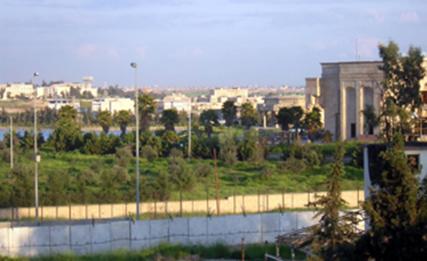
A fragmented Iraq would be impossible for the US to control, and would not only result in Iranian hegemony in the South, but in a forced condominium between guerrilla-controlled Anbar Province and Syria. This would not be a tactical setback for the Americans. It would be a death sentence for the entire post-Cold War US military redisposition strategy.
The Bush administration is now stuck with a secessionist-minded, pro-Iranian semi-puppet government and a military occupation that has been driven into its dispersed military installations.
In an article written by Knight-Ridder correspondent, Tom Lasseter (“Soldiers find it tough to stay tough,” August 28, 2005), he gives this stark account of a Marine base in Hit:
The inability of U.S. forces to hold ground in Anbar province in western Iraq, and the cat and mouse chase that ensues, has put the Marines and soldiers there under intense physical and psychological pressure.
The sun raises temperatures to 115 degrees most days, insurgents stage ambushes then melt into the civilian population, and American troops find themselves in a house of mirrors in which they don’t speak the language and can’t tell friend from foe.
Most Marines and soldiers in Anbar live behind massive concrete barriers, bales of concertina wire and perimeters guarded by sniper towers and tanks.
Despite their overwhelming military might, they must watch every alleyway for snipers and each patch of road for mines or bombs, which can send balls of flame through their vehicles.
Officers worry about the enemy while trying to make sure their men don’t crack.

Knight-Ridder is not exactly known as a leftist organ out to undermine the “noble cause” in Iraq.
And Iraq is not Yugoslavia.
On August 27 th, George W. Bush – between public statements to stem the tide of domestic unrest unleashed by Cindy Sheehan’s Crawford camp – telephoned none other than Abdul Aziz Al Hakim to beg for Sunni inclusion.
“Bush asked him to be more flexible with regard to Sunni demands,” said White House spokesman Trent Duffy. “This is an Iraqi process but the United States is doing everything it can to assist them in meeting their own obligations and deadlines under the Transitional Administrative Law” (law drafted by the Americans that has been violated with impunity for months).
SCIRI-DA’AWA AND “SUNNI” BIFRUCATION
Just as the Americans find themselves thrown into bed with a pro-Iranian “government,” the putative government of Iraq now finds itself on the horns of a dilemma with regard to the occupation forces. In its Faustian bid to maneuver the US occupation authority into an election to legitimate a Shia government, it has temporarily foreclosed any real relationship with the rebel provinces to the north: Sunni nationalists and Islamists, now frozen out of the political process but still engaged in an armed resistance to the American occupation.
This is an American occupation that has shown its willingness to destroy a city the size of Minneapolis (Fallujah) as a means of attempting to interdict the resistance at its popular base.
Given the terrible firepower from ground and air that can be mustered by the American forces, the nationalist and Islamist armed resistance (these are not clearly delineated categories, but more and more seem to be collaborating as an Islamist-nationalist resistance) has little choice in its own prosecution of the war – barring surrender. It must employ asymmetric military tactics, the most essential of which is to “blind” the occupation to the resistance’s size, activity, location, composition, and disposition. Without this “blinding,” guerrilla forces cannot effectively employ what are for them the two most important principles of war: Offensive and Surprise.
From U.S. Army, Field Manual 100-5, 1994 (Unclassified):
Offensive
Seize, retain, and exploit the initiative.
Offensive action is the most effective and decisive way to attain a clearly defined common objective. Offensive operations are the means by which a military force seizes and holds the initiative while maintaining freedom of action and achieving decisive results. This is fundamentally true across all levels of war. ...
Surprise
Strike the enemy at a time or place or in a manner for which he is unprepared.
Surprise can decisively shift the balance of combat power. By seeking surprise, forces can achieve success well out of proportion to the effort expended. Rapid advances in surveillance technology and mass communication make it increasingly difficult to mask or cloak large-scale marshaling or movement of personnel and equipment. The enemy need not be taken completely by surprise but only become aware too late to react effectively. Factors contributing to surprise include speed, effective intelligence, deception, application of unexpected combat power, operations security (OPSEC), and variations in tactics and methods of operation. Surprise can be in tempo, size of force, direction or location of main effort, and timing. Deception can aid the probability of achieving surprise. ...
There is not more effective means of blinding the US occupation forces than to attack Iraqi collaborators. As the Lasseter article on the Marine base in Hit pointed out, “American troops find themselves in a house of mirrors in which they don’t speak the language and can’t tell friend from foe.”
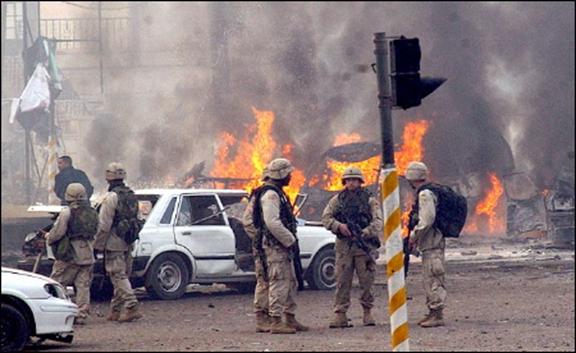
The reality of this situation, contrary to the vague sense of unease among Americans that the US is required to be in Iraq to prevent civil war, a presumption underwritten by more than a little plain racism, is that the current civil war between “Sunni” and “Shia” has its basis in that very occupation ; and there will be no basis for rapprochement between these parties until the American occupation ends .
Most Americans who are uneasy about the war do not understand this dilemma. But Washington understands it very well, and finds itself in a cul-de-sac on its account.
This accounts for the two panicky and contradictory demands from Washington in the last weeks of August 2005 that the Iraqis complete the draft Constitution (to reassure the wavering American public) and include the Sunnis (to offset Iranian influence).
On August 28 th, the draft Constitution was agreed upon – to the utter consternation of the US government – and it not only completely disfranchised the Sunnis, it included language mandating de-Ba’athification,” which paves the way, along with “federalism” for the Sunni provinces to become an oil-poor rump state.
The problem with a Sunni rump state, for the Americans, is that with it comes a Kurdish state.
KURDISH BIFURCATION
People who study politics need to study maps.
The centrality of Iraq to the US is oil. You can dance around this plain fact until Hell freezes over, but if Iraq were not located in the middle of the world’s largest oil patch ( Iran, Iraq, Saudi Arabia, UAE, and Kuwait) there would not be 140,000 US troops, 25,000 US mercenaries, and tens of thousands of US war profiteers there today.
The war in Iraq (and in Afghanistan, as well) is an energy war, first and last.
In Iraq itself, most of the oil fields are east of the Euphrates River, with the richest fields near Basra and Nasiriyah, and east of Kirkuk, in Iraqi Kurdistan. The principal oil pipelines in Iraq are the Iraq-Turkey Pipeline, the Iraq-Syria-Lebanon Pipeline, the Iraq-Saudi Arabia Pipeline, and the Iraq Strategic Pipeline.
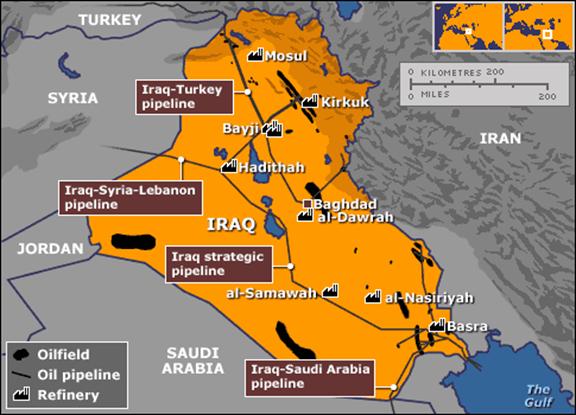
(Map from BBC)
The refineries are located in Mosul, Bayji, Haditha, Samawah, Nasiriyah, and Basra.
The north and south are connected solely by the Iraq Strategic Pipeline which runs from Haditha in the heart of the so-called Sunni region (and the site of repeated guerrilla engagements with the US Marines) down through Ramadi (also a guerrilla stronghold) and eventually into Basra. This means that the oil harvested in Iraqi Kurdistan has two options for export: the Iraqi Strategic Pipeline or the Iraq-Turkey Pipeline. The latter runs through the Sunni guerrilla strongholds east of Mosul, including Tal Afar.
Partition of Iraq means that oil from Southern Iraq can get out through the port at Um Qasr. But the rich fields of Iraqi Kurdistan, east of Kirkuk, would be landlocked if the Iraqi Strategic Pipeline were severed. This has proven a fairly easy task for the resistance. The only way out for Kurdish oil, then, is through Turkey or Syria, with the Syrian pipeline stretching through Sunni guerrilla country.
If Kurdistan pushes for independence, there can be little doubt that it will be militarily attacked by Turkey, to whom a Kurdish state is anathema, and for whom an external enemy could well serve the Turkish ruling class in these times of neoliberal hardship. While Turkey’s military is formidable in the region, there is also little doubt that the Peshmerga has gained enough strength and experience to fight them to a standstill on their own terrain – creating another war of attrition in the region that would damage any enthusiasm for investment there and further disrupt tight oil markets.
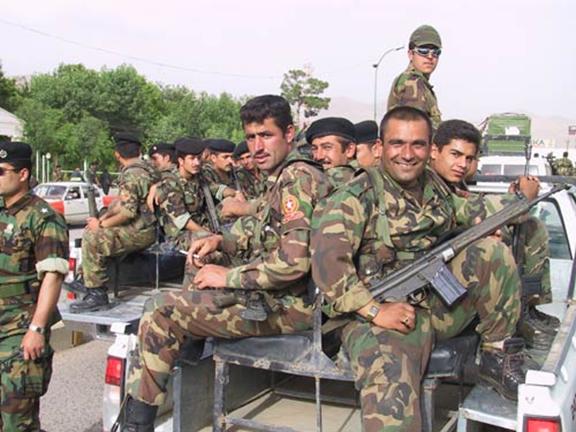
This presents a certain difficulty for the Americans on two accounts.
First, though NATO is now less important in the larger scheme of things than it was during the Cold War, it still provides the US with controlling influence over the military affairs of Western Europe – from which it fears a competitive regional capitalist bloc. Turkey is a member of NATO.
Second, if the Kurds do manage to develop an alternative export pipeline for their oil, there is only one bordering nation with which to negotiate it: Iran.
Though each day it seems less likely that the Bush administration will succeed with its occupation gamble, there is zero chance that anything can be salvaged for the US with the partition of Iraq.
SUMMARY
The increasing pressure on the Bush administration at home in the wake of the Cindy Sheehan catalyst and an impeding mass mobilization against the war on September 24 th lends more urgency to show a result in the Iraq war – the latest one being a draft Constitution. But not only is this issue so arcane to the average American ear that it fails to provide any resonant symbolism, the real result of the forced pace of the draft is exacerbating an extremely adverse political situation for the US in Iraq and the region.
The primary forces remaining in the Iraqi “government” are semi-puppets. On the one hand, they are dependent on American military power for the time being to maintain the current balance of forces in their favor. On the other hand, they clearly have an agenda that is designed to consolidate that long-term power through a pact of some sort with Iran.
This has created a polarization between current direct participants in the Iraqi government and the minority – strategically located and well-armed – Sunnis/nationalists in the north. That is not a cultural polarization but a political one that further entrenches the Faustian alliance between the government and the US occupiers each day, though there is no inhering reason among the general populations – who have for years seen inter-ethnic and inter-denominational marriage, etc. – for any pressure to partition the country.
The so-called Iraqi government does not in fact exercise real governance over any but a fraction of Iraq, and the “city-state” phenomenon throughout the country is setting the stage for a universally unacceptable Balkanization of Iraq, at the same time that it is developing the probable (and yet largely unknown) future local leadership of Iraq.
At some point in the future, most of these actors will have to deal with one another politically.
The Shia interim government and the US have maneuvered themselves into the same corner with antagonistic goals if and when they ever find their way out. The Sunnis and nationalists of the north have no stake in partition, and with the withdrawal of occupying forces would be freer to negotiate a political settlement with the south. This leaves one hugely influential local leader in the most flexible position in Iraq right now – Muqtada al Sadr.
He is the man to watch in Iraq for now.
Meanwhile, the greatest impediment to a political solution to post-invasion Iraq is not some cauldron of inter-ethnic rivalry. It is the politico-military distortion produced by the American occupation.

Please Note
This function has been disabled.
|
|
|
|



